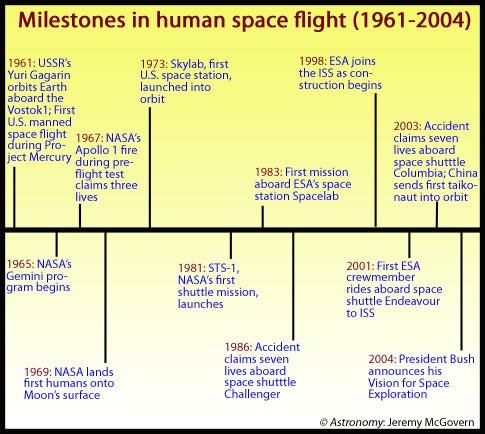On October 18, the Royal Astronomical Society (RAS) of the United Kingdom (UK) changed its position and now supports human space exploration. While astronauts from Russia, the United States, and China have collectively orbited Earth, walked upon the Moon, lived on the Mir Space Station and the International Space Station (ISS) during the past 44 years, the UK previously questioned the prudence of sending humans into space and to explore other planets. Although a member of the European Space Agency (ESA), the UK had funded only robotic space missions.
Some of the reasons for the RAS’ opposition were that humans need a bevy of support to go into space: air; water and food; a disposal method or storage space for waste materials; protection from extreme temperature and harmful radiation. Other considerations include the physical consequences of living and working in cramped quarters without gravity, and the mental toll of living in near isolation.
Escaping Earth’s gravity and re-entering its atmosphere are even more perilous undertakings than surviving the relative cold and calm of outer space. Technical failures and human errors have resulted in the deaths of both Russian cosmonauts and U.S. astronauts.
It is also expensive to launch humans and their support materials into space. Many UK scientists believe human space exploration diverts resources from robotic missions. Robots require less space, no food, no air, and can be replaced, whereas people cannot.
So what caused the RAS to change its stance? It comes down to adaptability, dexterity, and public support. After appointing an independent commission to re-examine “The Scientific Case for Human Space Flight” in December 2004, the RAS was advised that “profound scientific questions relating to the history of the solar system and the existence of life beyond Earth can best — perhaps only — be achieved by human exploration on the Moon or Mars, supported by appropriate automated systems.” Robots don’t yet possess the adaptability or dexterity required for some missions, like the repair mission for the Hubble Space Telescope.
The RAS commission also found that “the capabilities of robotic spacecraft will fall well short of those of human explorers” when it comes to in-depth exploration of the Moon and Mars. Additionally, a BBC opinion poll indicates public support is strong for the UK’s involvement in human space flight.
President Bush’s January announcement of a renewed U.S. commitment to return to the Moon and Mars with crewed missions, and China’s 2003 launch of an astronaut into Earth orbit, suggest human space flight is here to stay. And with the RAS’s support, it may gain more ground; future space flights may need to accommodate both humans and robots.











